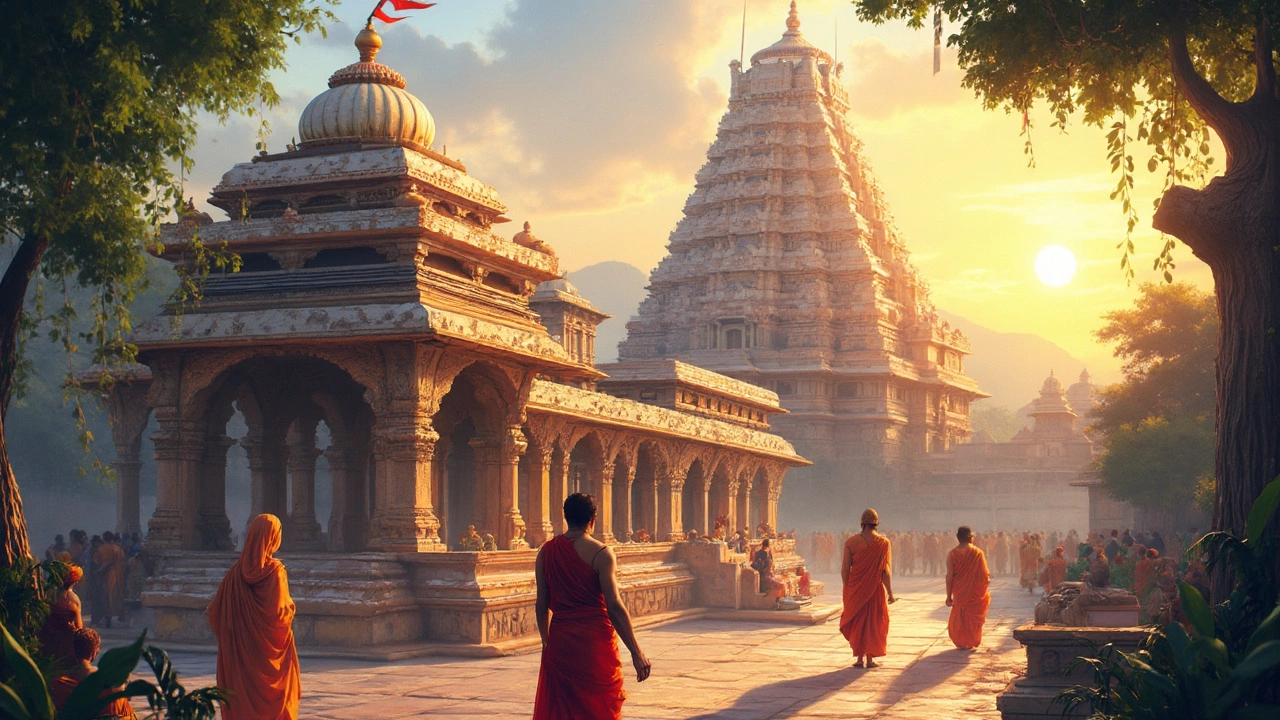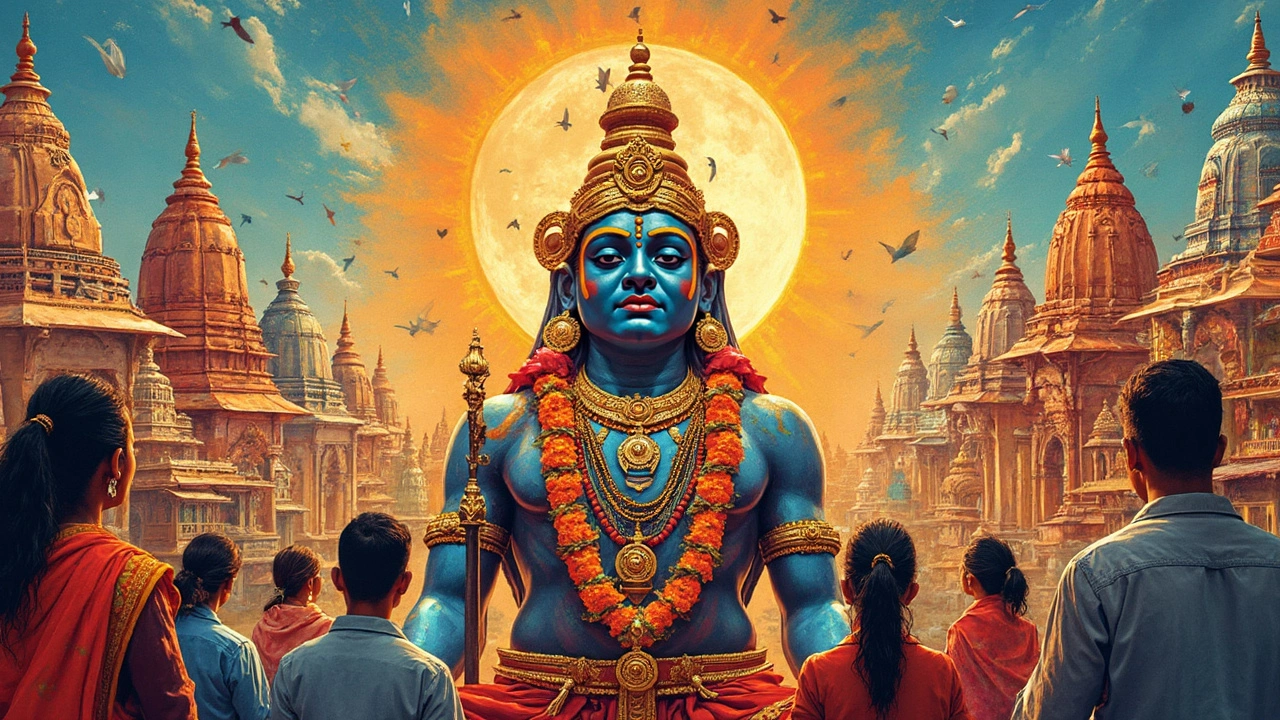World's Largest Religion: Unpacking Facts and Insights
 Mar, 31 2025
Mar, 31 2025
The question of what stands as the largest religion in the world often comes up in conversations about global culture and history. Maybe you're curious because you're planning a trip to India and are wondering about the religious landscape there. It's not just about trivia; it affects travel plans, cultural interactions, and personal experiences.
Let's cut to the chase—Christianity holds the title for the world's largest religion. But if you're stepping foot in India, you'll quickly see that Hinduism takes the spotlight. With temples dotting the landscape, it's a primary feature of the cultural fabric. Understanding these dynamics adds depth to any visit, especially if you're keen on temple tours.
- Understanding the Dominance of Christianity
- Hinduism's Unique Position in India
- Visiting India: Temple Tour Tips
- Global Influence of World Religions
Understanding the Dominance of Christianity
Christianity claims the top spot as the largest religion worldwide, with about 2.3 billion followers, which is roughly a third of the global population. Its reach isn't just limited to its followers; it significantly influences cultural norms, holidays, and even our week's structure. Think about how many countries celebrate Christmas or observe Sunday as a day of rest.
The faith originated over 2,000 years ago in the Middle East with the teachings of Jesus Christ. It spread rapidly through Europe thanks to the Roman Empire's extensive roads and networks. Over the centuries, missionaries took Christianity to the Americas, Africa, Asia, and Australia, making it a staple in various cultures and societies.
Today, you can find Christians almost everywhere, but the largest populations are in the Americas and Europe. Within Christianity, there are three main branches: Roman Catholicism, Protestantism, and Eastern Orthodoxy. Each has its traditions and practices, yet they all share core beliefs like the divinity of Jesus and the importance of the Bible.
Christianity's adaptability is one reason for its wide embrace. It has a knack for integrating local customs and traditions into its practice, which helps it resonate with diverse communities. Whether you're traveling to a cosmopolitan city or a remote village, don't be surprised to find a church at its heart.
Despite its dominance, Christianity faces challenges in a rapidly changing world full of alternative philosophies and belief systems. Yet, its influence on art, music, law, and education keeps it a formidable cultural force.
Hinduism's Unique Position in India
Alright, let's zoom in on India, where Hinduism isn't just another religion—it's the way of life for about 80% of the population there. It's fascinating because contrary to many religions that have a single founder, Hinduism evolved over thousands of years with influences from various cultures and traditions.
In India, the presence of Hinduism is unbeatable. From the Ganges River, which is considered sacred, to the staggering celebrations like Diwali and Holi, Hindu beliefs and practices are woven into the country's daily rhythm. What’s more? Temple architecture in India is a sight to behold, with each region showing off its own unique style. Whether it’s the intricate carvings of the temples in the south or the grandiose northern temples like Varanasi’s Kashi Vishwanath, the diversity is mind-blowing.
Visiting these temples offers more than architectural awe—it’s a deep dive into culture, art, and spirituality. Most temples have their own legends and histories worth exploring. And, not to forget, these temples aren't just limited to religious reasons; they also engage you with community activities, local music, and art.
Thinking of a temple tour? Here's a handy tip: Before visiting, make sure to check dress codes as many temples have specific requirements. Footwear is usually left outside, and some places might require you to cover your head. It's all about respecting the traditions that have been cherished for centuries.
For aspiring travelers, knowing a bit about Hindu festivals can boost your experience. Festivals like Navratri bring vibrant celebrations, where music, dance, and street food take over cities. Participating in these vibrant festivals, even as a spectator, makes you part of a larger-than-life celebration.

Visiting India: Temple Tour Tips
If you're planning to uncover the spiritual essence of India, a tour of its Hindu temples should be on your to-do list. Hinduism is not just another religion here; it's woven into the cultural, architectural, and historical framework of the entire country.
First off, timing is everything. The best time to visit most Indian temples is early in the morning or late in the evening. Not only will you avoid the heat, but you'll also catch the most beautiful light for photography. Remember, many temples follow strict hours, so plan ahead to make sure you don’t show up during an off-time.
Dress appropriately. Most temples have a dress code requiring visitors to cover shoulders and knees. Some even expect you to remove shoes before entering. A light scarf or shawl can be handy for women to cover their heads when needed.
Don't miss the rituals. India's temple rituals are a spectacle and understanding their significance can enhance your experience. For instance, in temples like Varanasi's Kashi Vishwanath, you might witness aarti ceremonies, where priests perform ritual worship involving fire and chanting.
Be prepared for a sensory overload. Temple tours can be overwhelming with the sounds of bells, the smell of incense, and vivid visual displays. It’s all part of the experience, so embrace it!
| Top Temples to Visit | Location | Notable Feature |
|---|---|---|
| Meenakshi Temple | Madurai, Tamil Nadu | Exquisite Dravidian architecture |
| Harmandir Sahib (Golden Temple) | Amritsar, Punjab | Gold-plated structure over a sacred pond |
| Kedarnath Temple | Uttarakhand | Part of the Char Dham pilgrimage |
| Sun Temple | Konark, Odisha | Unique chariot design |
Lastly, a guide can be priceless for making sense of the history and spiritual significance of each site. Local guides often have stories to tell that you won't find in any guidebook.
Whether you're visiting the colossal halls of Madurai or the serene shores of the Golden Temple, each stop is a doorway into a different aspect of Hinduism and offers a unique glimpse into what makes these places sacred.
Global Influence of World Religions
These days, understanding the reach and impact of world religions is more relevant than ever. With Christianity, Islam, and Hinduism leading the pack in numbers, their fingerprints can be spotted in every corner of the globe.
Christianity boasts over 2 billion followers worldwide. It's not just about Sunday church services; it shaped Western civilization and continues to play a big role in art, politics, and culture. Think about how many holidays are celebrated across the globe thanks to its influence—Christmas isn't just a religious event; it's a worldwide festivity.
Then there's Islam, with its profound influence in the Middle East, parts of Asia, and Africa. It's not only the second-largest religion but also the fastest-growing. Islamic architecture, with its beautiful domes and minarets, fascinates tourists and scholars alike.
Now, let's not forget Hinduism, especially when we're talking about temple tours in India. India holds a vast majority of the world's Hindus and offers an immersive experience into rituals, spirituality, and history. Temples are more than just places of worship; they are architectural marvels and community hubs. They tell stories of eras gone by and still affect today's culture and politics in profound ways.
If you're a numbers person, check this out:
| Religion | Followers | Major Regions |
|---|---|---|
| Christianity | 2.3 billion | Global, predominance in Americas and Europe |
| Islam | 1.8 billion | Middle East, Southeast Asia |
| Hinduism | 1.2 billion | India, Nepal |
In the grand scheme of things, these religions do more than just garner followers. They shape societies, influence governments, and enrich culture to an extent that's hard to measure. Whether you're interested in traveling or simply eager to learn, understanding world's largest religions can be an eye-opener to how deeply they're woven into the world's tapestry.